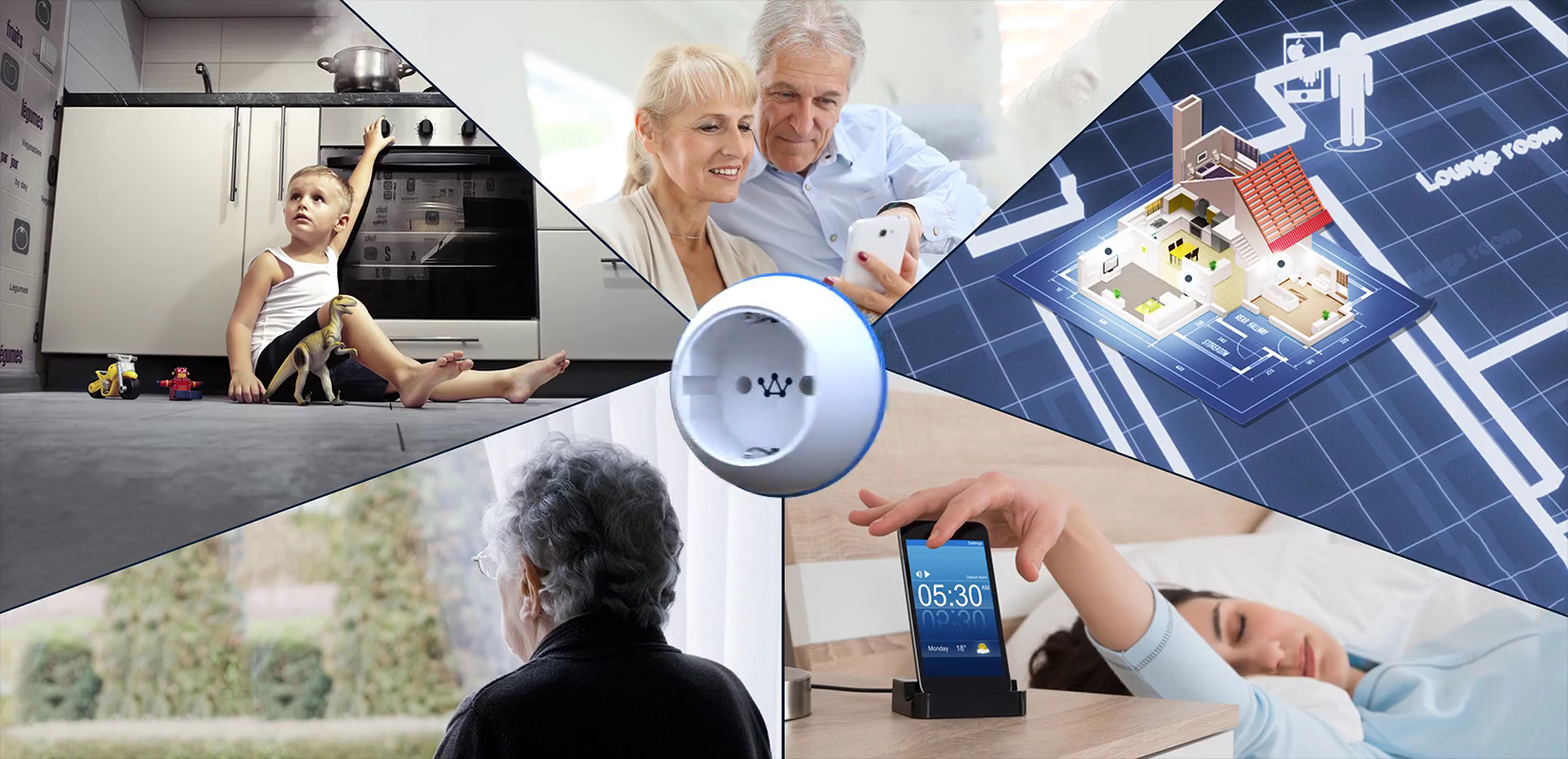
Q: Anne, could you introduce your company and product in a few words?
Crownstone was founded in 2016 with the support of Rockstart, and of Almende, an investment and research company with an interest in networks of all kinds. Our background is in robotics, especially as used in the 'intelligent home', whose eyes and ears are sensors... like the Crownstone. But it’s more than a sensor. It's a switch, a dimmer, a monitor, and a standby manager, all at once.
Q: How is your product specially innovative?
Our speciality is indoor positioning, which means quite simply that your house knows where you are, and can respond to your needs without intervention on your part. Two units are available: the Built-in Crownstone which fits inside any power socket, at installation or retrofitted; and the Crownstone plug, that you simply insert into an existing socket. All you have to do is keep a smart device with you - smartphone, key tag, wristband, etc. - and the Crownstone will switch lights on and off, stop your kids using dangerous appliances, or send romantic messages to your loved one... whatever you have asked it to do!
Q: Tell us about your story with ENGIE.
What about the possible future story? ENGIE is in a good position to metamorphose from an energy company to a service-based company. Crownstone's ideal scenario? A contract to equip with Crownstones the homes of people becoming ENGIE customers!
Q: What will you be showing at CES?
We will be presenting the proximity-based functions so that visitors can actually see the Crownstone in action. Lights coming on as they approach and off as they move away, for example.
Q: What do you expect from your participation in CES with ENGIE?
Essentially, distributors for the USA. We already have contacts there, but up to now only the 230V model was available. However, the units for the American market are just about ready for certification, so finding distributors is the next step.
Q: What is the most significant innovation for you of all time ?
Perhaps what I would call the 'miniaturisation of multiple functions.' Swiss watches were an early example – I find them fascinating - and then, think of GPS! Not so long ago, it meant a really big installation, reserved for commercial ships. Now, everyone has it in their car or on their cellphone.
Q: What question(s) would you like me to ask you?
Two, I think. One about the market for smart home systems, and one about the future.
Q: So let's start with the market for smart home systems.
For the moment, this kind of product is often distributed via energy companies. But smart home systems mean potential savings for the final customer, which may not necessarily be good news for utility companies. I think the proper route for this market is the real estate market, and especially property developers, who can give buildings an energy-conscious approach at the design stage, making them extremely attractive to potential buyers.
Q: And the future?
The wearables market is failing to take off as it should, and I think the main problem is one of charging. What is needed is wireless charging. There are Israeli companies currently working on an infra-red system, which I think is a good choice. When that is operational, a lot of things could well change!
Sign up for the ENGIE Innovation Newsletter